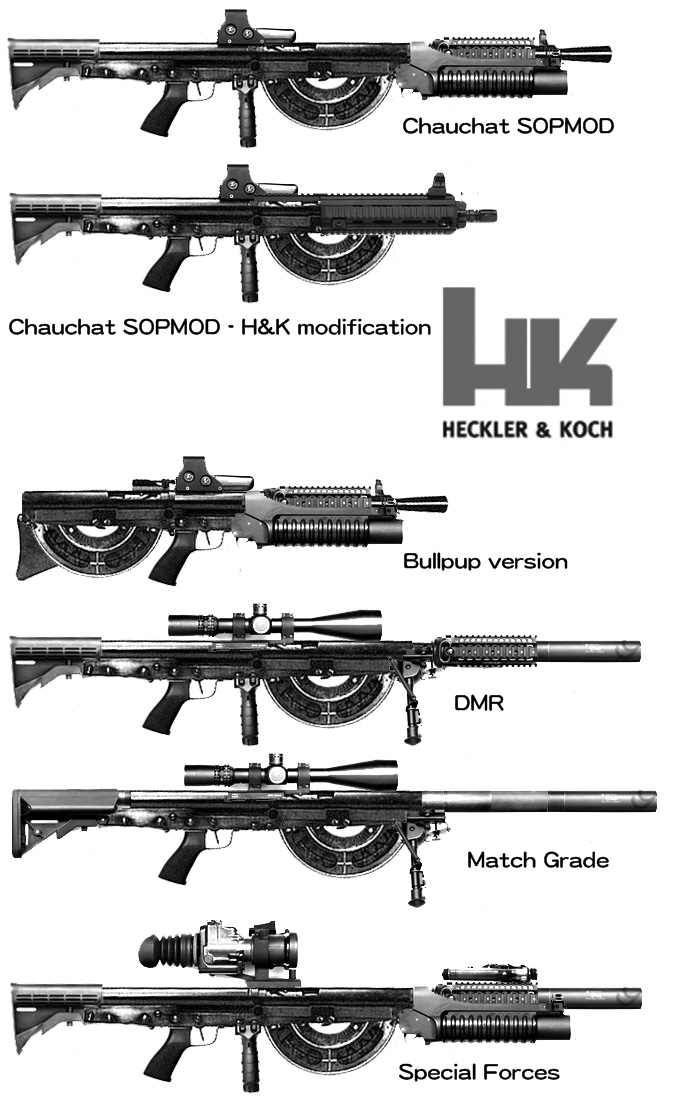An updated German take, on a French classic:

I wonder if H&K fixed the reliability issues? :P
I hear the M203 comes with custom made 40mm “white flag” cartridges as a hat tip to the design’s French heritage.
Note: Blogging is going to be light for the next few days… probably just a funny picture or two every day until Friday. I’ll catch up with the other usual stuff then.



Comments
10 responses to “Heckler & Koch Chauchat”
And for those of you who know nothing about the Chauchat, R. Lee Ermy demonstrates:
(Skip to 3:51)
http://www.youtube.com/watch?v=CQEN1335vd8
Sick…. so sick. :)
Hey according to the dude on weaponology you can take parts off it and make a still as one who knows a lot about such things I can only think of uses for the barrel
Because you suck and we really, really, hate you, and we want you to die.
The early version of the Chauchaut adopted by the American military was actually a lightweight version intended for use on aircraft that was had converted to fire .30-06. These lightweight models had open and exposed mechanisms that allowed them to become fouled with mud, particularly the magazines which would cause the gun to simply stop working in the trenches. The magazines on the some models Chauchauts were intentionally opened to the air because they would allow aircraft gunners to pay attention to their remaining ammunition levels in the relatively clean biplanes but like I said. Terrible for field use.
Of course this point is rather moot because the second generation of LMGs including the BAR, and the F.MLE/24 which were both superior firearms. (The design principles of the BAR live on today in the M240B/G/Mag58).
the 240 is a descendant of the BAR? Interesting, never made the comparison….
Not even HK could make that piece of crap good.
Even if they did they wouldn’t sell it to you.
The Chauchat in 8mm Lebel provided good service, and was the most produced machinegun of WWI. The US version in .30/06 got some measurements wrong.
The Chauchat was the first machinegun that permitted fire and maneuver tactics. Provide steady covering fire so your maneuver element can get in close enough to pop a grenade or two into the enemy position.
Those tactics were taught by the sadly attritted teams of French Chausseur units to the US soldiers, and they were used effectively. They were much better than the long range riflery and aggressive use of the bayonet that the US soldiers and marines were provided in the US.
I would love to use the long recoil system (useful in reducing the rate of fire) in a 5.56mm bullpup configuration. It is my belief that springs are sufficiently reliable that good service can be obtained even if you need to have two operating springs.
Why a slow rate of fire? It reduces the number of times that your maneuver element is exposed to enemy counter fire while you are putting in a new magazine. It increases the time for you to recover from recoil between rounds (reducing average recoil) force. It makes your ammunition last longer.